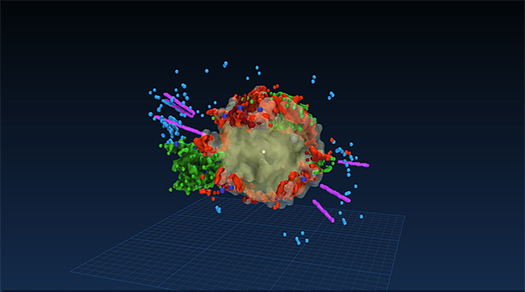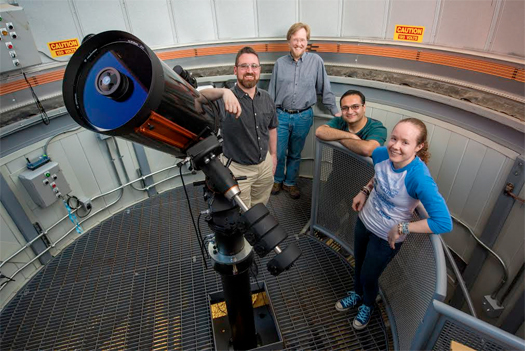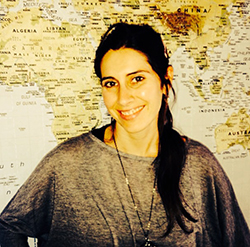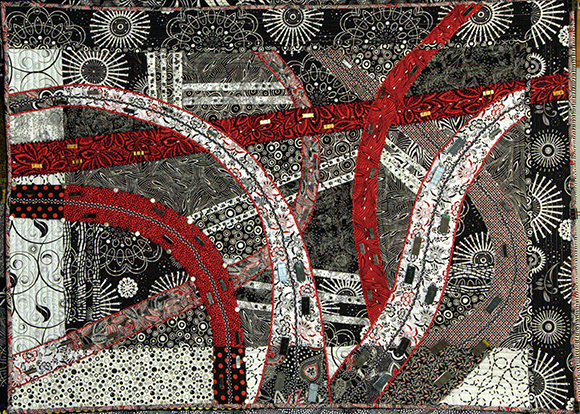Taking a Supernova into the Third Dimension
Submitted by chandra_blog_manager on Mon, 2016-08-01 13:53
3D Supernova Remnant. Credit: NASA/CXC/SAO

We are pleased to welcome Bailey Tetarenko as our guest blogger. She is the lead author on a paper featured in our latest press release about a possible new population of black holes in the Galaxy. Bailey received her undergraduate degree in Astrophysics at the University of Calgary and then a master’s in Physics at the University of Alberta in 2014. She is now two years into her Ph.D. in Physics at the University of Alberta, where she is studying the black hole population of the Milky Way.

For fans of black holes, we live in exciting times. Nearly all of our empirical knowledge about stellar mass black holes – that is, black holes weighing about 5 to 35 times the mass of the sun – comes from black hole X-ray binary systems. In these systems a black hole pulls in material from a nearby companion star, causing the system to become very bright in X-rays. But, recently gravitational waves have been detected from pairs of distant black holes that emit no electromagnetic radiation (a.k.a. all forms of light). And now, my team's work suggests that there are many black hole X-ray binaries in our own Milky Way that emit relatively little X-rays.

Illustration: NASA/CXC/K.DiVona
Click here to watch the recent TED talk for this feature!
Objects in space are rather far away. The Moon is our closest celestial neighbor at nearly a quarter million miles from Earth, and the nearest star, our Sun, is 93 million miles away.
These extreme distances mean that it’s usually impossible to touch real objects in space (meteorites that fall to the ground not withstanding). Advances in both astronomy and technology, however, now allow you to do the next best thing: hold a 3-D model of one based on real data.
The story behind such a remarkable feat starts with how astronomers study space. Unlike previous generations of sky gazers, today’s astronomers look at the Universe in many kinds of light, across the full electromagnetic spectrum. Through advanced telescopes and detectors, scientists can “see” from radio waves to gamma rays. Why is this important? We need to look at the Universe in all the types of lights to even begin to understand it.
Take X-rays, for example. Back in 1999, NASA’s Chandra X-ray Observatory was launched in order to observe the high-energy Universe including such things as colliding galaxies, black holes, and supernova remnants.
One such supernova remnant that Chandra studies is Cassiopeia A. About 400 years ago, in our own Milky Way galaxy, a star that was about 15 to 20 times the mass of our Sun, detonated in a supernova explosion.

Micro to macro
Illustration: NASA/CXC/K.Divona
When people ask me what I do for work, I often say that I’m a storyteller. It’s not that I stand on a stage with a microphone and narrate long tales to a rapt audience.
My stories are told differently, not through voice or music, but through lines of code and technical applications. They are stories, of science.
As an undergraduate, I began my career in molecular biology, looking at the tiny organisms that can transmit Lyme disease to humans aboard the Ixodes Scapularis (a.k.a., the Deer tick). But by the time I graduated, I was moving on to learn about another type of science: that of computers.

We welcome Alicia Goldstein, who was an intern at the Chandra X-ray Center this past summer, as our guest blogger. Ms. Goldstein, originally from Ellicott City, MD, is currently a senior at the University of Maryland, Baltimore County where she majors in mechanical engineering. Prior to this summer, Ms. Goldstein was an intern at NASA’s Goddard Space Flight Center and lists working for NASA as her ideal career goal.
This summer, I worked on two separate projects. The first involved the development of a Python code that would display the defined and predicted positions and velocities of Chandra, and the second involved the analysis of the periods of the variable stars in the Chandra Variable Guide Star Catalog,, or VGuide, database. The coding project involved interpreting and manipulating previous code, as well as creating entirely new sections. Given an input of two data files, the code was able to output a file with plots of the predicted and defined velocities and positions of the spacecraft.

We are very pleased to welcome Vivienne Baldassare as a guest blogger today. Vivienne is the first author of a paper that is the subject of our latest press release, about an exceptionally small supermassive black hole. She is a PhD candidate and National Science Foundation Graduate Research Fellow in the University of Michigan Department of Astronomy. Vivienne obtained her undergraduate degree in physics from Hunter College, where she was also a member of the Macaulay Honors College.
It is well established that most, if not all, massive galaxies host supermassive black holes at their centers − our own Milky Way houses a several million solar mass black hole in its core. Little is known, however, about the population of black holes in the centers of dwarf galaxies. I study the centers of small galaxies to see how many host supermassive black holes and if those black holes interact with their galaxies in the same way as bigger supermassive black holes.
Though dwarf galaxies are more common than large galaxies, it is more difficult to determine whether they host black holes. When galaxies are large and nearby, we can find central black holes by studying the motions of stars in the region dominated by the gravity of the black hole. Since smaller black holes influence smaller regions, this method would only work for dwarf galaxies in our cosmological back yard. Instead, we must search for active black holes in dwarf galaxies, i.e. black holes that are voraciously consuming material, releasing large amounts of light from the galaxy’s center.
There have been so many excellent images and messages being tied to the hashtag #girlswithtoys on Twitter over the past several days. We would love to be able to take some selfies with some of the many female scientists, engineers, and other professionals who use and run the Chandra X-ray Observatory. (Of course, the Director of Chandra is Belinda Wilkes, the first woman to lead one of NASA’s Great Observatories) Unfortunately, Chandra is currently in its highly elliptical orbit that takes it a third of the way to the Moon, so the spacecraft is unavailable for a snapshot.


We are pleased to welcome Mar Mezcua as a guest blogger today. She led the study that is the subject of our latest press release, about an intermediate mass black hole. Mar is from Balaguer (Lleida, Spain) and studied Physics in the University Autonomous of Barcelona and in the University of La Laguna, where she also specialized in Astrophysics. She completed her PhD at the Max-Planck-Institut fuer Radioastronomie (Bonn, Germany) in 2011 and then moved to the Instituto de Astrofisica de Canarias (Canary Islands, Spain) as a postdoctoral researcher. She is currently a postdoctoral researcher at the Harvard-Smithsonian Center for Astrophysics.
I found my calling when I was 13 years old and serendipitously watched a documentary on TV about galaxies and supermassive black holes. I wanted to become an astrophysicist and study these exciting objects!
Supermassive black holes reside at the center of galaxies and are more than a million times more massive than the Sun. As their name implies, they are black and thus cannot be observed directly. Hence, to detect black holes we have to observe the matter that surrounds and feeds them, this is, the material that the black hole “accretes.” In supermassive black holes, this accreting material heats up high enough to emit X-rays so that we can detect it with X-ray satellites like NASA’s Chandra X-ray Observatory. Some supermassive black holes also eject outflows of plasma or jets, which emit mainly at radio wavelengths.
The people who work at the Chandra X-ray Center truly have many talents. Take, for example, Sherry Winkelman who works on the Chandra Data Archive, which houses the vast amounts of Chandra observations taken over the lifetime of the mission.

Just recently, Sherry’s quilt called "Interchange," an abstraction of the Chandra archive, was accepted for the 2015 Smithsonian Community Committee art exhibition, Artists at Work show. The quilt will be on exhibit in the Ripley Center in Washington, D.C. from February 4 through May 1, 2015.
Last week, Tech Collective, Rhode Island’s industry association for Information Technology and Bioscience, announced ten Rhode Island IT practitioners, digital media designers, and entrepreneurs as its 2014 Tech10 Award recipients. Our own Kimberly Arcand, a Rhode Island native, was recognized for work as the Visualization Lead for NASA’s Chandra X-ray Observatory. Kim shared her thoughts on some important topics in science communication, which we include below.

The “STEM” fields of science, technology, engineering and mathematics seem inextricably linked, particularly in the field of space science. We can work from wherever there’s a connected computer – being able to access data from a spacecraft, orbiting a third of the way to the Moon, because of the telecommunications system/network and software that connects the observatory to the Deep Space Network and down through to – eventually - my laptop. My particular piece in this is directing the translation of the data and information into forms that others can use. That process happens in many ways, whether through the more literal form of processing binary data into visual representations of a cosmic object, or tweeting about a recent science result.